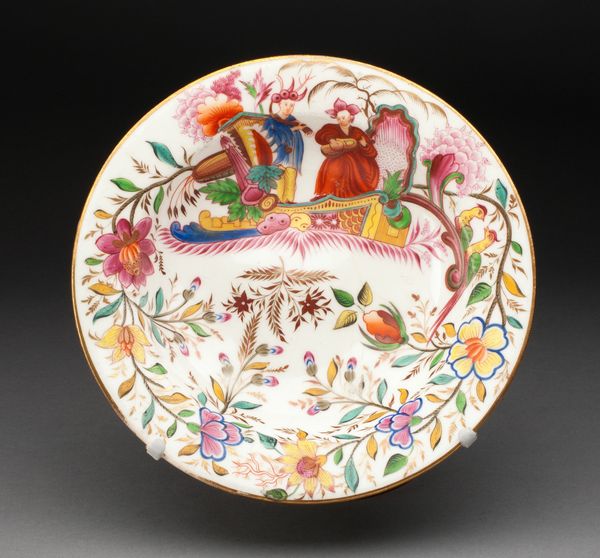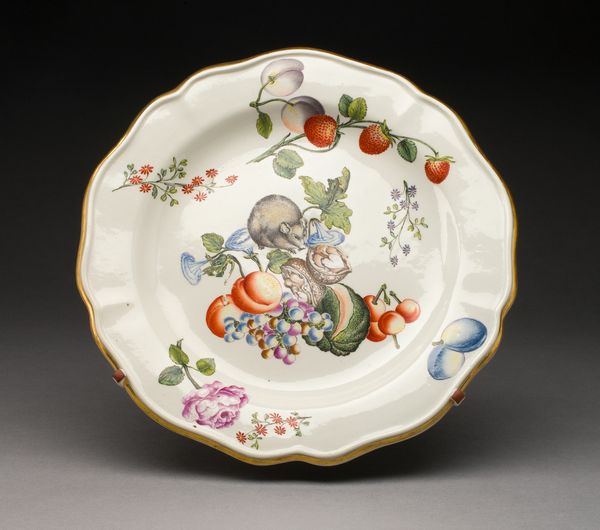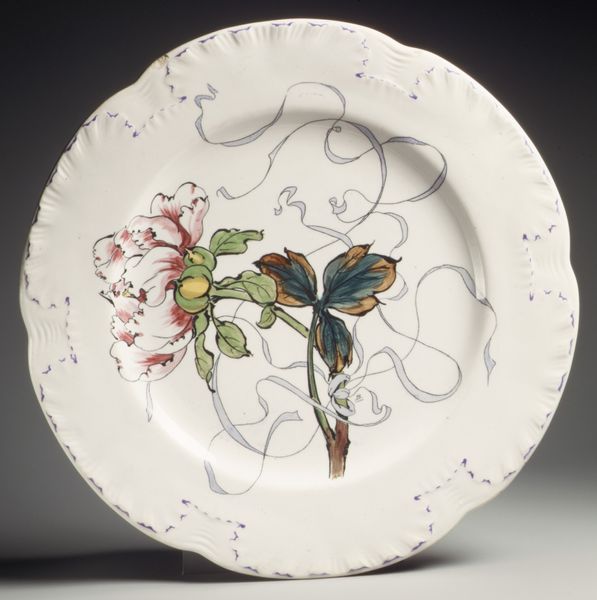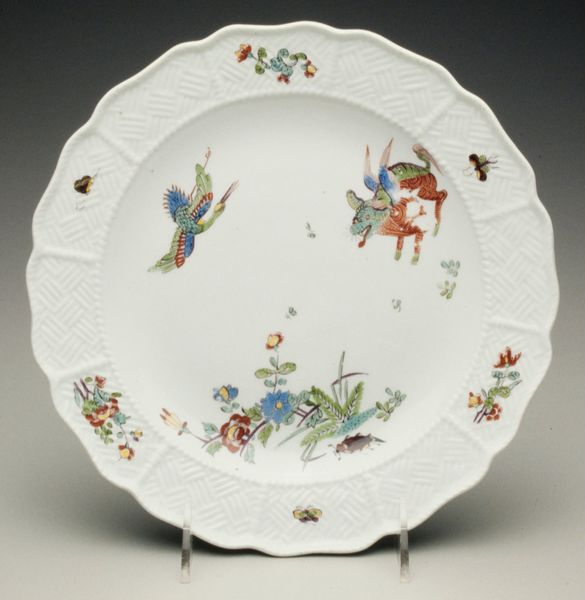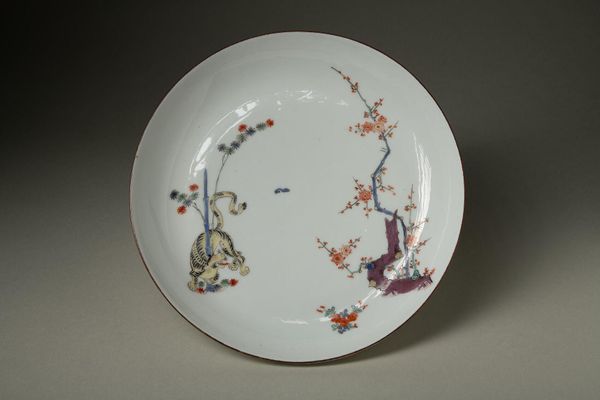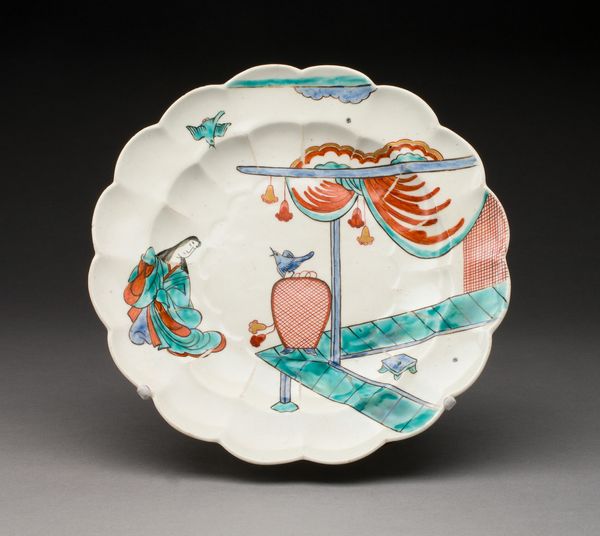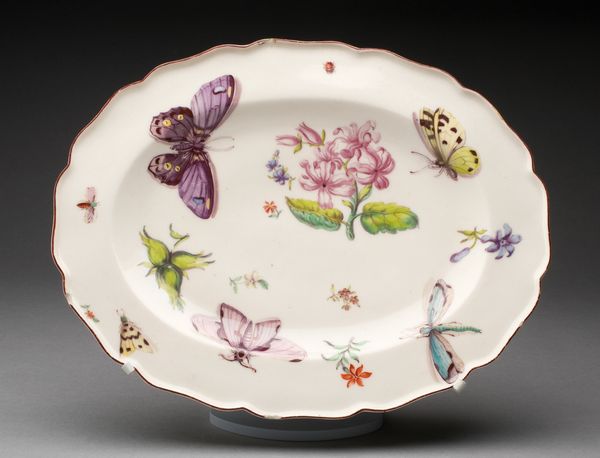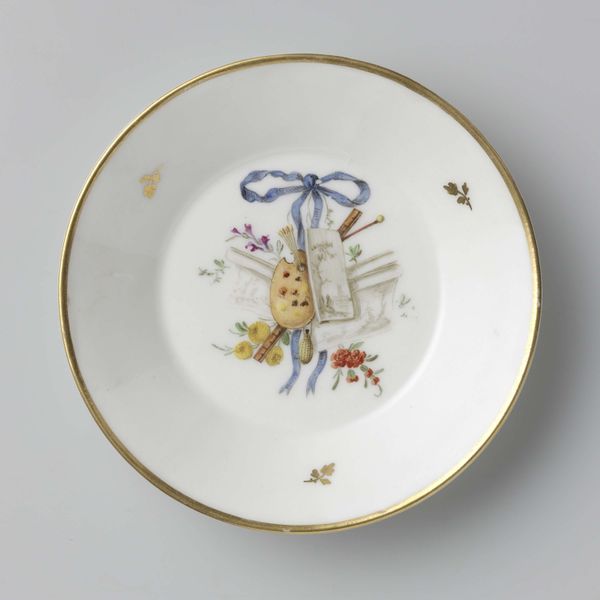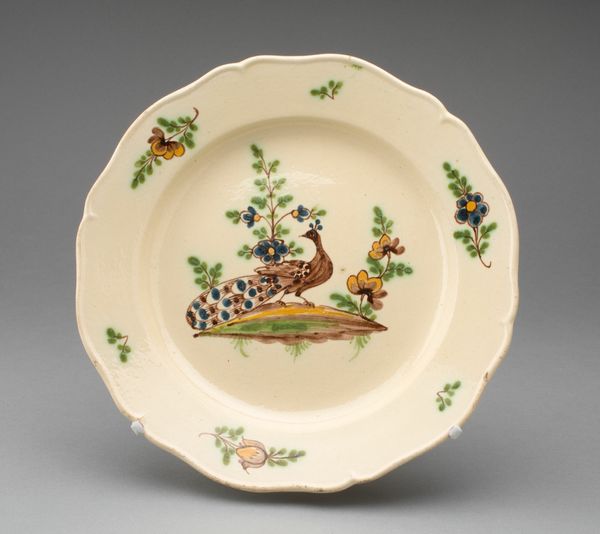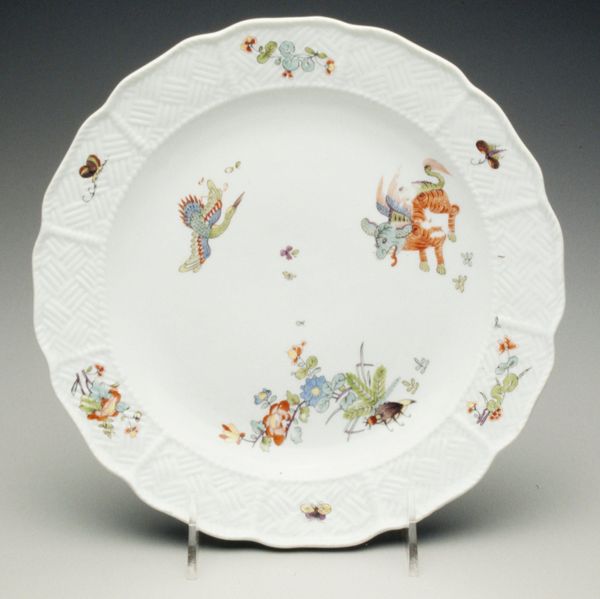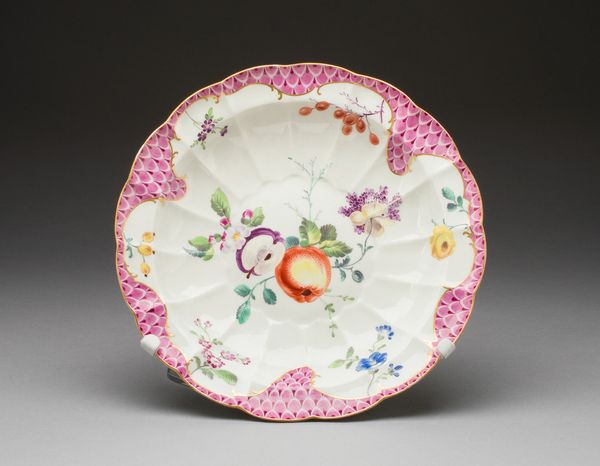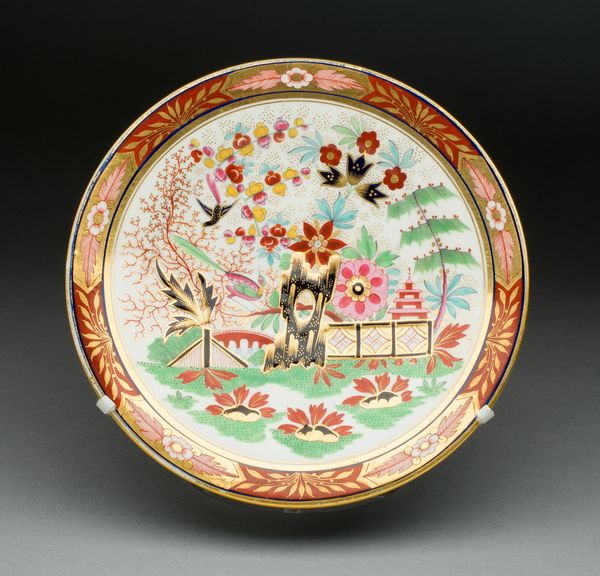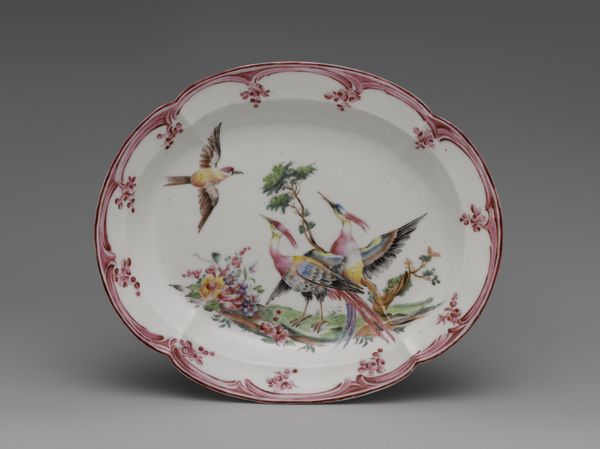
painting, ceramic, porcelain
#
painting
#
ceramic
#
porcelain
#
ceramic
#
genre-painting
#
decorative-art
#
watercolor
#
rococo
Dimensions: Diam. 33.4 cm (13 1/5 in.)
Copyright: Public Domain
Editor: So, this is a porcelain plate from the Du Paquier Porcelain Manufactory, dating back to around 1730-1735. What immediately strikes me is the painted scene; it's quite detailed for something intended to be used as tableware. What do you make of it? Curator: I find myself drawn to the very materiality of this object. Porcelain, particularly at this time, was a highly coveted and expensive material, a signifier of wealth and status accessible only to a select elite. Its production involved complex processes, from sourcing the kaolin clay to the labor-intensive firing and painting. Editor: So the value resided not just in the artistic merit, but also in the...effort and rarity? Curator: Precisely. Consider the Rococo style painting. Genre scenes such as the one here were fashionable, reflecting the aristocratic interest in idealized pastoral life, though their production was happening within a deeply stratified social structure. We need to ask ourselves who produced this, and for whom? What were the conditions of labor? Editor: That's fascinating, to think about the supply chain and the social context informing even a seemingly frivolous object. Does the painting itself reveal any insight into the means of production? Curator: I think it hints at that aspirational lifestyle marketed to elites but realized through intensive workshop production. The painting is delicate, refined...expensive, and designed to inspire the same perception toward its owner and their environment. Editor: So it’s not just a pretty plate, but a material record of class, labor, and aspiration? Curator: Exactly. Looking closely at objects like these allows us to unpack complex social relations embedded within their production and consumption. They are a reflection, in many ways, of 18th-century life, beyond just aesthetic concerns. Editor: I never would have considered that there's so much more than what is presented literally on the plate, but seeing its historic context does shift my perspective on decorative art in general.
Comments
No comments
Be the first to comment and join the conversation on the ultimate creative platform.
